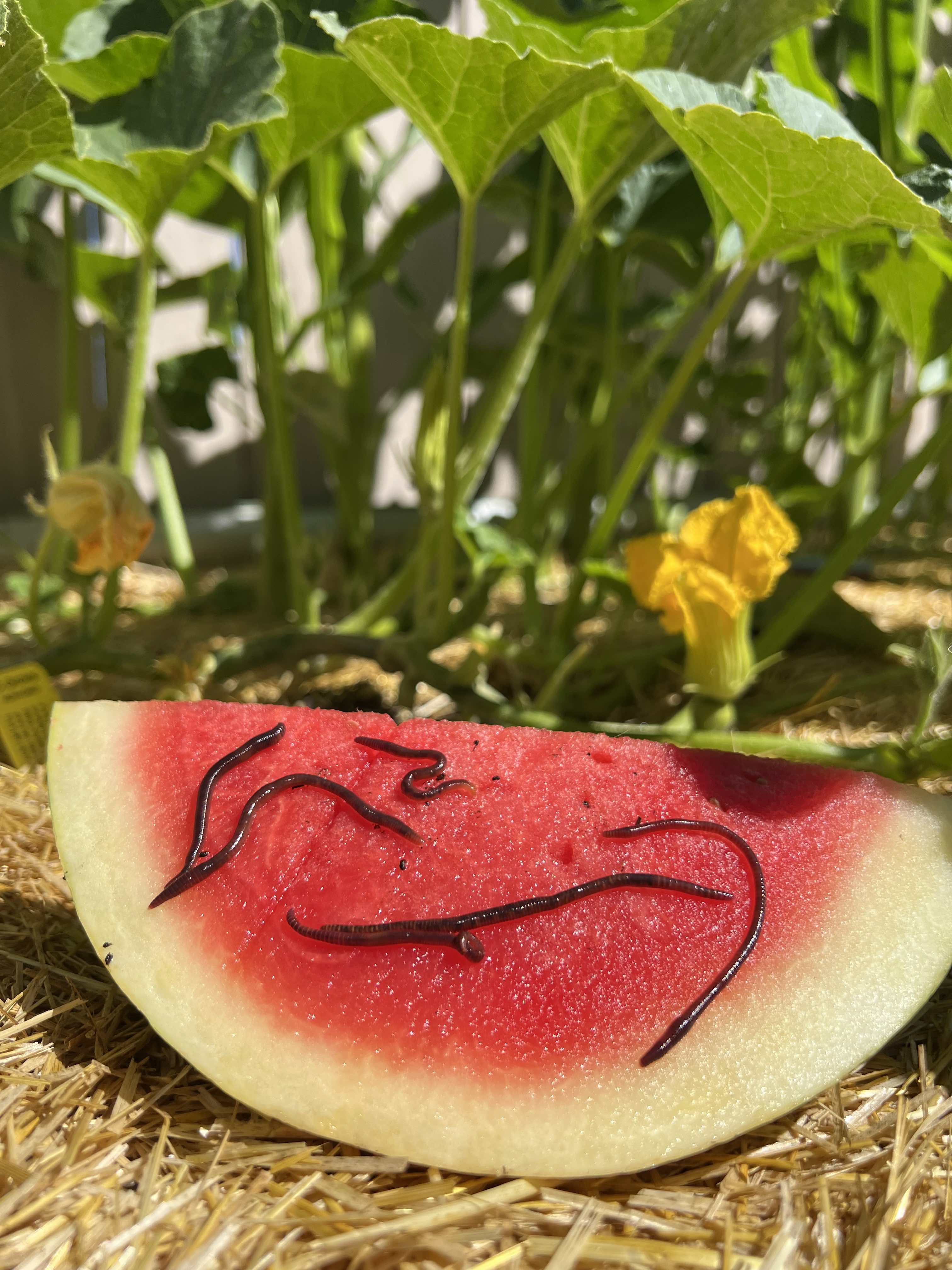Organic Composting with Red Wiggler Worms - Boost Your Garden's Growth
Organic Composting with Red Wiggler Worms - Boost Your Garden's Growth
Blog Article
Red Wiggler Worms Demystified: Opening the Tricks of Vermiculture for Greener Living and Nutrient-Rich Soil
In the realm of lasting practices for enhancing soil top quality and promoting eco-conscious living, red wiggler worms play a critical yet often overlooked function. Red Wiggler Worms. Comprehending the intricacies of caring for these worms, maximizing their setting, and utilizing their castings can lead to a greener way of life and healthier dirt for plants to thrive.
The Role of Red Wiggler Worms
Red Wiggler worms play an essential duty in composting systems by efficiently breaking down natural matter right into nutrient-rich castings. These starved eaters take in a range of natural products, such as kitchen scraps, lawn waste, and paper items. As they feed, the worms' gastrointestinal processes damage down the natural matter into a fine, dark, and nutrient-dense product recognized as worm castings or vermicompost.
The castings created by Red Wiggler worms are extremely advantageous for dirt wellness and plant growth. They are rich in vital nutrients like phosphorus, nitrogen, and potassium, which are essential for sustaining healthy plant advancement. Additionally, worm castings consist of beneficial microorganisms and enzymes that help enhance dirt structure, boost water retention, and boost nutrient uptake by plants.
Benefits of Vermicomposting

In addition, vermicompost, the nutrient-rich output of vermicomposting, works as a superb organic plant food and soil conditioner. It boosts soil framework, enhances dirt aeration, and increases dirt moisture retention. These homes add to much healthier plants with stronger origin systems and much better resistance to pests and conditions. Vermicompost likewise enriches the dirt with vital nutrients like nitrogen, potassium, and phosphorus, advertising plant growth and total soil fertility.
Additionally, vermicomposting supports sustainable horticulture techniques by giving a natural and chemical-free alternative to synthetic fertilizers. Red Wiggler Worms. This ecologically pleasant strategy not just enriches the soil but also helps in reducing dependence on hazardous chemicals, promoting a greener and much more lasting method of horticulture
Establishing a Worm Bin
When developing a worm container for vermicomposting, correct arrangement is essential to ensure the success of the composting procedure. The initial step in setting up a worm container is choosing a suitable container.
After adding the bedding, present the red wiggler worms to the container. The worms should after that be supplied with food scraps such as fruit and vegetable peels, coffee next premises, and eggshells.
Consistently keep an eye on the wetness degrees and temperature in the worm container to guarantee optimum conditions for the worms. With correct setup and upkeep, the worm bin will properly convert natural waste right into nutrient-rich compost for your plants and yard.
Gathering Worm Spreadings
To successfully accumulate nutrient-rich worm castings from your vermicomposting system, an organized harvesting method is vital. When it comes time to gather the worm spreadings, there are a couple of vital steps to follow to ensure a successful process.

Troubleshooting Common Issues
Identifying and addressing usual difficulties that might arise throughout the vermicomposting process is critical for maintaining a productive and healthy worm bin. One usual issue that vermicomposters encounter is overfeeding. Adding excess food scraps can result in an accumulation of moisture and level of acidity in the worm container, possibly harming the worms. To avoid this, feed the worms in moderation, guaranteeing that the food scraps are properly damaged down prior to including more. Another issue is undesirable smells rising from the worm container. Foul smells suggest anaerobic conditions, normally triggered by overwatering or insufficient ventilation. To fix this, readjust the dampness degrees by adding dry bed linen materials like shredded newspaper or cardboard and increase oygenation by turning the bed linens frequently.
In addition, if the worm populace is declining or the worms show up undesirable, maybe due to environmental stress factors such as extreme temperature levels or pH levels. Keeping track of these aspects and making necessary modifications is essential for the wellness of the worms. By troubleshooting these typical concerns quickly, vermicomposters can make sure a smooth and successful vermicomposting procedure while keeping a flourishing worm populace.

Verdict
To conclude, red wiggler worms play an essential role in vermiculture by breaking down raw material right into nutrient-rich dirt. The advantages of vermiculture go to this site include greener living and improved dirt top quality. Setting up a worm bin is important for successful vermiculture, and harvesting worm spreadings gives beneficial garden compost for gardening. By recognizing and troubleshooting usual issues, individuals can open the keys of vermiculture for lasting living and healthier soil.
As they feed, the worms' digestion procedures damage down the natural issue into a fine, dark, and nutrient-dense material known as worm spreadings or vermicompost.
The spreadings created by Red Wiggler worms are highly beneficial for soil health and plant development. Including excess food scraps can lead to an accumulation of dampness and level of acidity in the worm container, potentially hurting the worms.Additionally, if the worm population is declining or the worms appear undesirable, it can be due to ecological stressors such as extreme temperature levels or pH levels. Establishing up a worm bin is essential for effective vermiculture, and harvesting worm spreadings offers valuable compost for horticulture.
Report this page